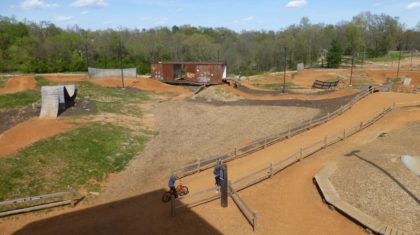
By Jean Crowther, Planning Associate, Alta Planning + Design
What is walkability? The most basic definition is simply, “the ability to walk.” However, true walkability is so much more than that. It can affect everyday decisions and quality of life in ways you may not even realize.
Last week my husband realized that he often opts not to walk to work because of time, but when considered in the larger context of his schedule, it is actually his most efficient commute choice. For him, walking requires a 25 minute walk at a relatively fast pace. When he drives, the total trip from our driveway to the office door, takes about 15 minutes (parking and traffic included, which many people forget to factor in their estimate of travel time). This means that on the days he walks to work, he spends 50 minutes on his roundtrip commute and gets 50 minutes of moderately vigorous physical activity. Compared to a 30 minute round trip commute with zero physical activity, he has added 20 minutes to his trip but gained 50 minutes of exercise. That’s a pretty good deal!
So if you consider exercise an important part of the week — and particularly if you have a hard time finding the time to exercise like we do — you can easily see the value of walkability, whether it applies to the trip to work, or choosing to walk to the bank, library, school, or park.
But everyday decisions like my husband’s only exist in communities where walking is possible and practical. Communities with optimal walkability embody three main principles: physical access, places to go, and proximity to home.
- Physical access is the cornerstone of walkability. In a walkable community, people must have a safe means of traveling somewhere. This means that there must be a physical path marking the entire route where pedestrians are allowed. Without accessible sidewalks and trails, pedestrians are unable to safely walk anywhere.
- Physical access may provide a means of getting around, but in order for a community to be truly walkable, there must be an end to that means. Sidewalks with no points of destination aren’t very effective. Instead, trails, paths, and sidewalks should connect residents’ homes with their workplaces, schools, stores, transit stops, culture, and restaurants.
- Proximity to home is another key component of walkability. A general rule of thumb is that desirable destinations should be within a half mile of homes for a community to be considered walkable–that’s about a 10-minute walk.
With each of these variables defined, it’s also important to ask why walkability is so important. Our bodies weren’t designed to sit all day. In fact, long periods of sitting have been linked to problems with our muscles, bones, and even brain function. In a culture where work often consumes our lives, it’s no surprise that one of the most common excuses for avoiding exercise is, “I don’t have time.” We wake up, get ready, drive to work, drive home, and then take care of our children. Where does exercise fit into our responsibilities?
According to a study by the AAA Foundation for Driver Safety, American drivers spend an average of 46 minutes driving each day. Imagine living in a community where you are able to walk to work, school, and other activities. Instead of carving out extra time reserved for exercise, walkable communities allow us to incorporate physical activity into routine parts of our day that already exist. It’s no surprise that walkable communities have a lower incidence of obesity and diabetes.
Consider the benefits of walkable communities. Do you think walking is important? Are you interested in making your community more accessible and focusing on walking as a priority? Stay tuned for part 2 of this post where we will share ideas for improving walkability in your community. And in the meantime, check the Health + Planning Toolkit developed by Eat Smart, Move More South Carolina and its partners, to learn how you can help facilitate healthy change where you live.
This post was originally posted at Let’s Go! South Carolina, a division of Eat Smart Move More South Carolina, is a statewide movement to help South Carolinians live healthier lives by choosing healthy foods and becoming physically active.


